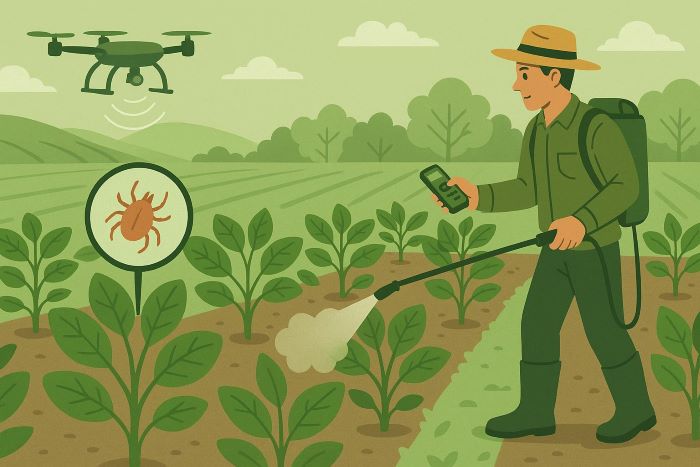


In a farmer-led trial, SG granule insecticides killed pests 70% faster than traditional sprays.
Systemic insecticides differ from surface sprays because they are absorbed into a plant’s tissues—stems, leaves, and even fruit. Once inside, the active compound becomes part of the plant’s biology, providing internal protection. When pests feed on these treated plants, they ingest the insecticide and die.
Neonicotinoids, sulfoximines, and macrocyclic lactones are popular classes. From coffee fields to fruit orchards, from rice to roses, these substances are utilised. Systemic remedies are frequently the first line of defence in crops like cotton or okra, where leaf and fruit borers cause significant damage.
Emamectin benzoate is a potent macrocyclic lactone that is one of the most often used active components nowadays. Because of its great effectiveness and compatibility with integrated pest management (IPM) programmes, farmers frequently purchase Emazek Emamectin Benzoate 1.9% EC insecticide to combat lepidopteran pests like borers and caterpillars.
While the convenience is clear, environmental impact hinges on how these products behave after application.
The ability of systemic pesticides to persist in soil and seep into groundwater is a significant concern. Certain substances, particularly neonicotinoids, can linger in the environment for months due to their comparatively lengthy half-lives. Others, such as Emamectin, break down more rapidly when exposed to UV light and microbes.
So what determines their environmental impact? Several variables come into play:
Farmers who follow label instructions and avoid repeated applications often see fewer off-target effects. Studies from the Environmental Protection Agency show that adherence to proper intervals and application rates significantly reduces risk to aquatic invertebrates.
Pollinators—especially honeybees and native bees—are highly sensitive to systemic insecticides, particularly when they feed on nectar or pollen from treated plants. However, not all systemic compounds are equally hazardous, and not all crops pose the same level of risk.
Timing, crop type, and application method are critical. Applying systemic insecticides during non-flowering stages or using drip irrigation instead of foliar spray significantly limits bee exposure.
“Using insecticides responsibly isn’t about avoiding them—it’s about knowing where they fit without tipping the balance.”
Responsible use isn’t just about protecting pollinators—it also means preserving natural pest predators. Lady beetles, spiders, parasitoid wasps, and ground beetles play crucial roles in field ecosystems, helping to keep secondary pests in check.
This is where integrated practices shine. Alternating chemical control with biological measures such as releasing Trichogramma wasps or applying Beauveria bassiana—protects biodiversity while maintaining control. Farmers adopting IPM strategies report not only lower pest resurgence but also healthier field ecology.
Responsible insecticide use also touches the consumer end of the chain. Residues on produce are regulated by maximum residue limits (MRLs) to ensure food safety. Systemic insecticides used too close to harvest can exceed those limits, posing a risk to both consumer health and international trade compliance.
For this reason, it is essential to observe pre-harvest intervals (PHIs). Before the product is eaten or sold, residues have time to break down to acceptable levels during these windows, which typically last anywhere from three to twenty-one days, depending on the crop and compound.
